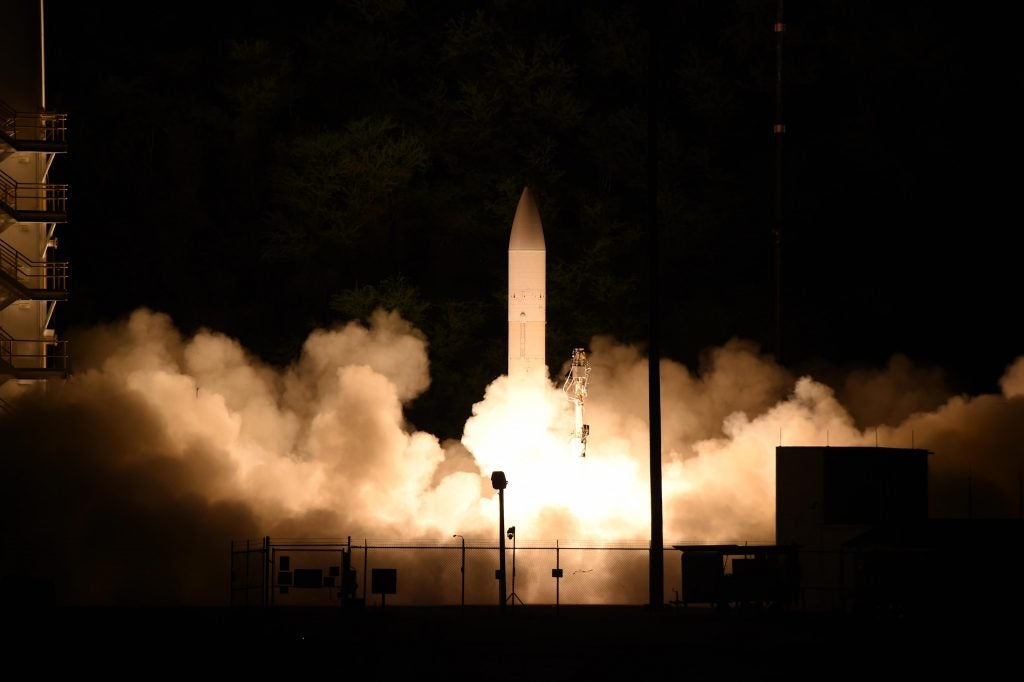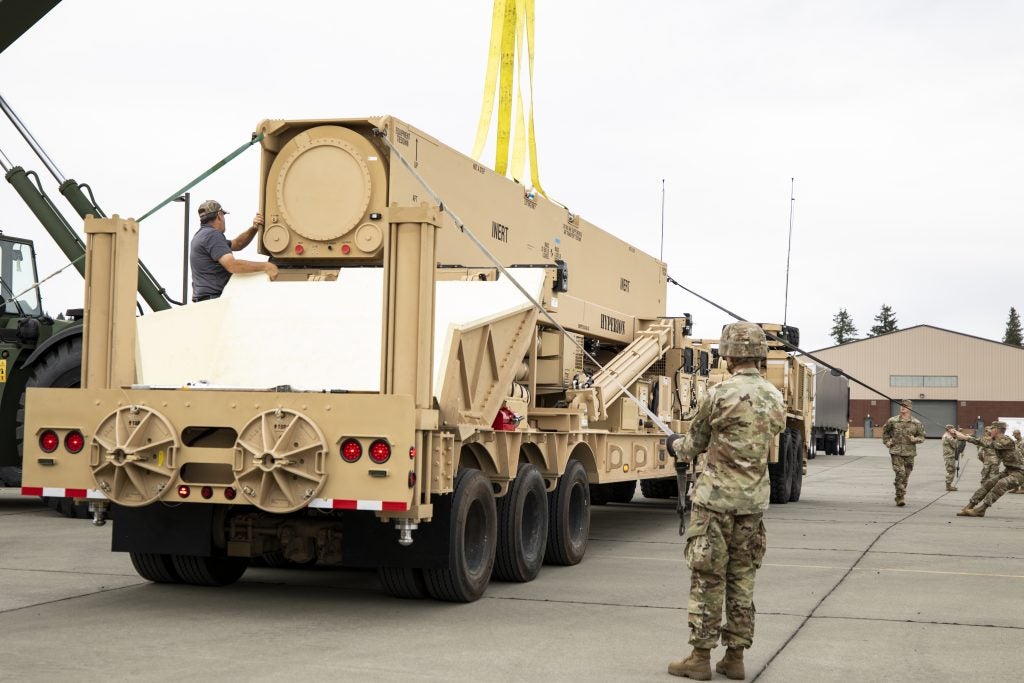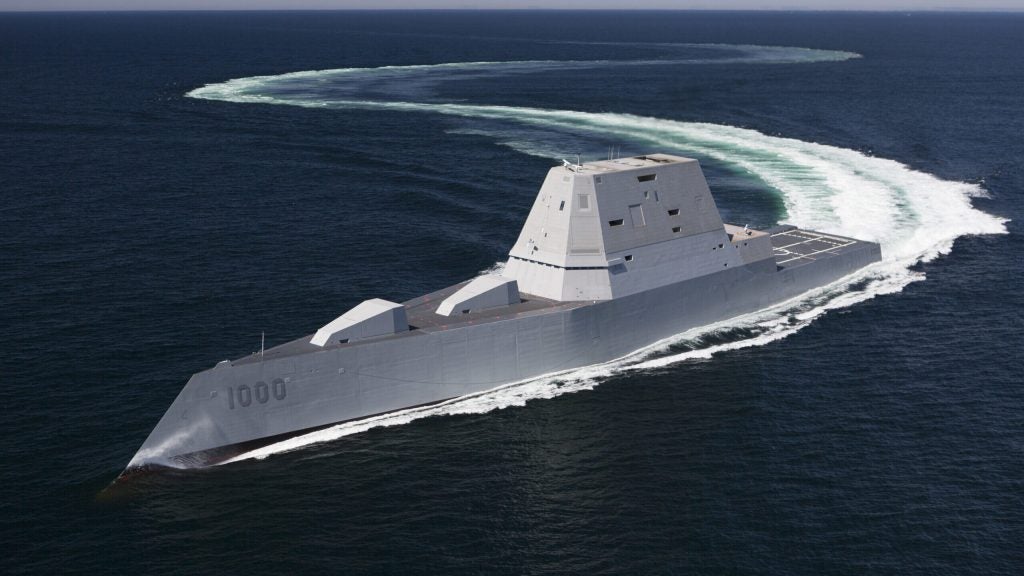Zumwalt-class Destroyers Move One Step Closer to Fielding Hypersonic Weapon Systems
On 15 February, the U.S. Navy awarded Lockheed Martin a modification contract for integrating the Conventional Prompt Strike (CPS) hypersonic weapon system on the Zumwalt class. According to the press release details, the modification which is worth more than $1.1 billion when fully exercised, was a follow on to an un-priced letter contract awarded by Strategic Systems Programs (SSP) in 2021. The modification will cover program management, engineering development, systems integration, long lead material, and special tooling and equipment in support of missile production.
According to a press release from Lockheed Martin, the company will provide:
“launcher systems, weapon control, All Up Rounds (AURs), which are the integrated missile components, and platform integration support for this naval platform. The company, along with industry partners including subcontractors Northrop Grumman and General Dynamics Mission Systems, is on track to provide the CPS surface-launched, sea-based hypersonic strike capability to sailors by the mid-2020s.”
“Lockheed Martin continues to advance hypersonic strike capability for the United States through this new contract,” said Steve Layne, vice president of Lockheed Martin’s Hypersonic Strike Weapon Systems section, “early design work is already underway. Our team looks forward to supporting the warfighter by providing more options to further protect America at sea.”
The press release also states that the contract provides for additional AURs plus canisters for the U.S. Army’s Long Range Hypersonic Weapon (LRHW).
The Conventional Prompt Strike program

The Conventional Prompt Strike program is a joint program between the Navy and Army, to deliver a long-range missile that carries the Common Hypersonic Glide Body (C-HGB). The reentry vehicle is derived from the Sandia Winged Energy Reentry Vehicle (SWERVE) designed by Sandia National Laboratory. Aside from the Navy’s CPS, the C-HGB is utilized by the Army’s Long Range Hypersonic Weapon (LRHW). The role of the Navy in the program is the design and development of the C-HGB and two-stage booster, and integration of the C-HGB with the booster to create an All-Up Round (AUR). The Army is responsible for the manufacturing of the C-HGB.
The CPS is being run as a Section 804 Middle Tier of Acquisition (MTA) program. Under this the Navy’s strategy has three phases: Phase 1 seeks to develop and demonstrate a hypersonic, cold-gas launched missile system prototype capability; Phase 2 will field CPS onboard a Zumwalt-class destroyer; and Phase 3 will transition the program to a Major Defense Acquisition Program at Milestone C, and field CPS onboard Virginia-class submarines and the remaining Zumwalt-class destroyers.
In 2019, the Navy developed a Master Test Strategy (MTS) for Phase 1 of the CPS program. The Navy was to conduct five AUR flight tests under a Joint Flight Campaign. The first test, JFC-1, took place on June 2022, and after the AUR experienced an in-flight anomaly. Following the failure, the schedule for JFC-2, which was to occur in late 2022, was deferred to 2023. Under the Navy’s MST, four more JFC tests have to be carried out before the fourth quarter of 2024 for the completion of Phase 1.
The JFC-2 and 3 flight tests will be conducted in support of the Army’s LRHW program, with the tests to utilize the Army weapon control system, Battery Operations Center, and prototype transporter-erector-launcher. For the Army to transition LRHW from MTA to a Program of Record (POR), the service must complete three AUR tests. Due to the shortage of available test ranges and test range instrumentation assets on the West Coast, the flight tests will be conducted from Cape Canaveral.
The JFC-4 and 5 flight tests are set to demonstrate the Navy’s cold-gas launch capability. JFC-4 will most likely be carried out from the Navy’s Underwater Launch (UWL) test facility, which recently resumed construction after a brief pause. The facility is being built by NAVFAC and is expected to be completed in time for JFC-4 and 5. The Navy has not developed test plans for Phases 2 and 3 of the program yet, but Phase 3 testing is expected to conclude in 2029 according to the Director, Operational Test and Evaluation’s (DOT&E) 2022 annual report.
Fielding Timeline

The Navy awarded a 10.5$ million contract to Ingalls Shipbuilding to plan for the modernization of USS Zumwalt (DDH-1000) and USS Michael Monsoor (DDG-1001). According to USNI News, the contract plan is believed to include modification work that will prepare the vessels for CPS integration. This will be done by removing the two Advanced Gun Systems (AGS) on each ship and replacing them with four 87-inch tubes called Advanced Payload Modules (APM). Each APM holds three CPS missiles, which allows each ship to carry 12 missiles.
The Navy expects to deploy the first CPS on the USS Zumwalt (DDG-1000) in the fourth quarter of 2025, followed by the USS Michael Mansoor (DDG-1001) in the fourth quarter of 2026, and the last ship in the class, USS Lyndon Johnson (DDG-1002) in the fourth quarter of 2027. Fielding on the Virginia class is expected to take place in 2029 on one of the Block V Virginia class submarines, which will be equipped with the Virginia Payload Module (VPM).
The Army plans to field the first LRHW battery in 2023 with a second in 2025 and third battery following in 2027. The main parts of the battery will be made up of four Transport Erector Launchers (TEL), each equipped with two missiles and a Battery Operations Center (BOC). The LRHW batteries will be deployed as a part of the Army’s new Multi Domain Task Force. There the batteries will fall under a Strategic Fires Battalion, alongside a HIMARS Battery and a Mid-Range Capability Battery. The first battery will be assigned to the 5th Battalion, 3rd Field Artillery Regiment at Joint Base Lewis-McChord, Washington. The 5th Battalion is a Strategic Fires Battalion that is part of the 1st Multi Domain Task Force.

